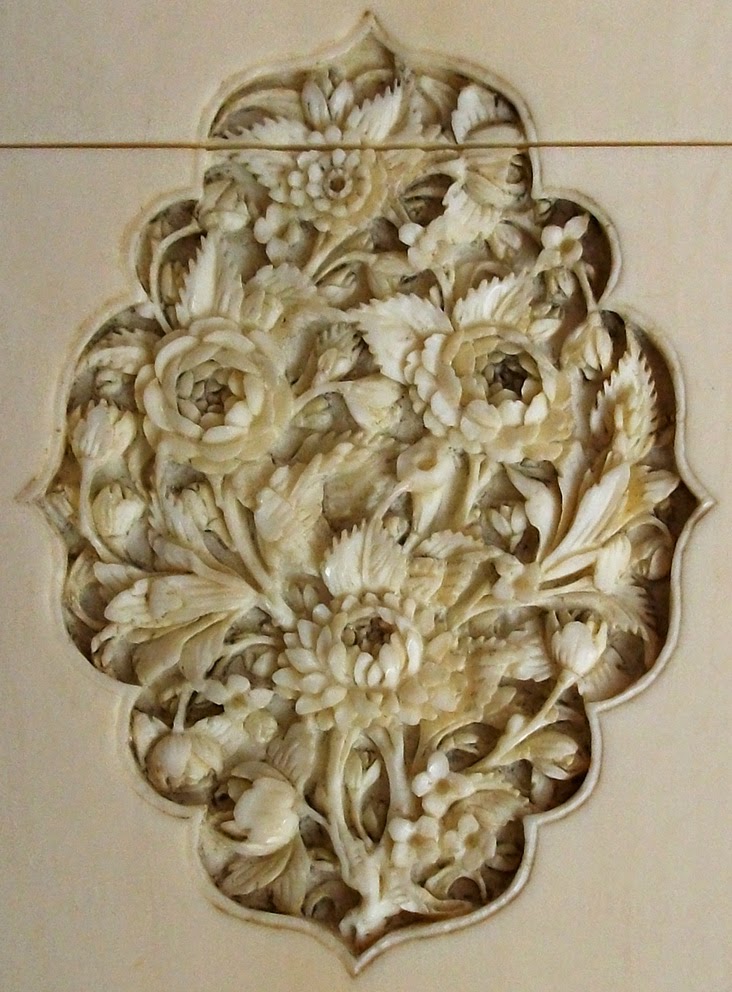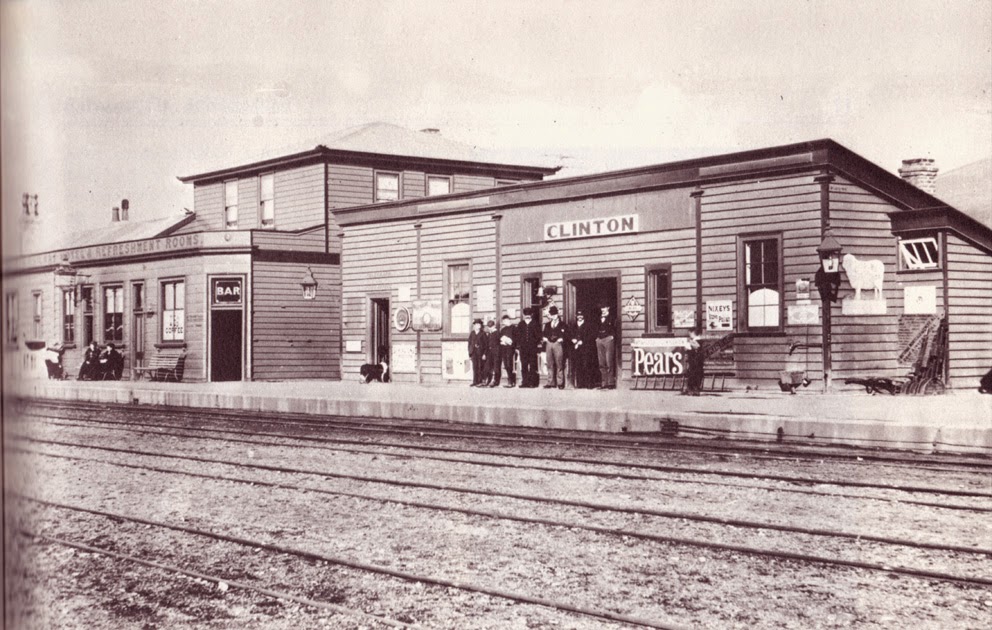 |
| The Famous Writer and Popular Novelist Charles Dickens seated at his desk writing, in this instance using an earlier quill pen [Source : Wikipedia] |
There is something very personal and satisfying about writing and actually receiving a letter. But in this high-tech age the art of writing a traditional letter has increasingly fallen victim to the ubiquitous and informal email or simply writing a short and often hurried message inside a Christmas, gift or condolence card.
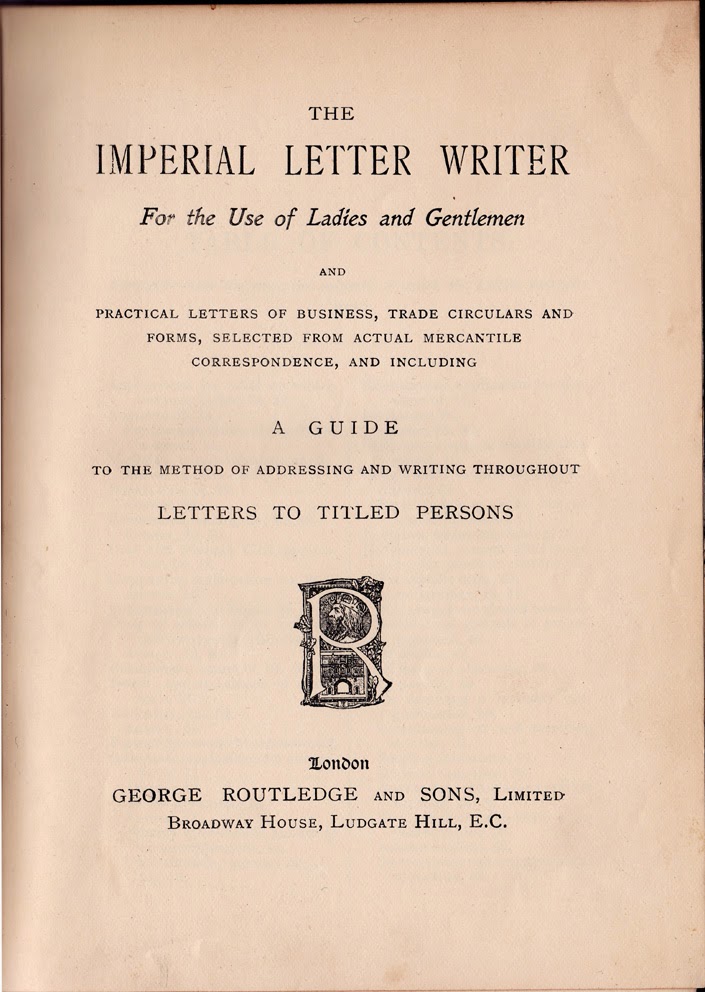 |
| "The Imperial Letter Writer", including examples of letters to titled persons [from my own collection] |
By the Victorian era letter writing was truly an art and high standards were expected. As with so many other things, there was a correct and proper way to do things and no one should be in any doubt as to how this should be achieved. The etiquette around how to compose a letter, be it either for personal or business mail, was clearly laid out in popular letter writing manuals which covered the general format of most commonly written letters. While most examples are terribly verbose or overly effusive by today's standards one should always take such things in the context of the time. From an early age all educated children would have the basics of letter writing instilled in them simply because there was no other means of communication available to them should a personal visit not be possible. It was a source of great pride to be able to write a good letter and indeed such was expected of all well educated people.
 |
| "The Art of Traditional Letter Writing" |
So, as a little bit of period entertainment, let me personally guide you through the process of writing a personal letter using items from my own collections which would have differed very little from the first few decades of the 19th century. Our intended recipient is the Father of a women to whom he wishes to express his close affections - but etiquette dictates that this requires her Father's permission. If in any doubt as to the standard format and wording we should consult our helpful letter writing manual.
Our paper will be one - and only one - sheet of English A4 sized (210mm by 197mm) good quality white un-lined paper (US A4 sized paper can be used and folded to suit final sizing later). The reason for the size and the limit of one sheet of paper will become very apparent later. The paper, which is hand-made, will ordinarily have a visible watermark and will have been made of recycled and bleached fibre extracted from cotton and linen rags. This actually produced an excellent acid-free paper which has thus lasted extremely well, especially when it was used for printing newspapers. In fact it was the then commonly used and corrosive "iron gall" inks which have caused the most damage to surviving early letters. Acidic wood pulp for manufacturing paper did not commence until after 1843 but good quality "rag" paper generally continued to be used with formal letters for many years after this date.
 |
| My mid 19th century Coromandel Wood "Writing Slope" |
We shall also need our writing slope which normally holds all our writing requisites in various compartments. The general design of writing slopes had changed very little since the late 18th century, the Novelist Jane Austen having a very similar one which still survives, being preserved at the British Library. My own circa 150 year old brass-bound coromandel wood writing slope with interior mahogany joinery dates from the era 1840's to 1870's, having been brought to New Zealand in early 1879 by my 28 year old Scottish Grandfather on the 100 day non-stop voyage of the sailing ship "Dunnottar Castle". But it most likely originally belonged to his own Grandfather who died in 1870 or his parents who died in 1862 and 1865 respectively. As with many writing slopes, this one includes a secret compartment with small drawers to hold valuable items.
 |
| A Selection of Steel Nibs for Dip Pens. Steel nibs were mass-produced from 1822 [Source : Wikipedia] |
We shall next need a steel nib "dip" pen along with a bottle or container of ink. New mass-produced steel nib pens became very popular after 1822, prior to this quill pens were in commonly use. The latter were long feathers which had the end cut to form a fine point but required frequent sharpening, this process being called "dressing".
My writing slope contains two small glass ink-wells with both black and dark brown ink. But black would be the standard colour to use for our purposes. Blue ink appears not to have been in common use at this time. We shall however use our earthenware ink-well, being of a type in common usage as the ink would be sold in these stoppered containers which also came in a larger size. Dip pens, using removable nibs and which were required to be frequently dipped into the ink, came in fine, medium and wide variations. Some types of nibs were more suitable for particular styles of writing than others and gave more control over the amount of ink applied, just as with ball-point pens today. Fountain pens were not in general use until the 1850's although early variations on this theme existed.
 |
| "Routledge's" Letter Writing Manual |
To compose our letter, let us consult our letter writing manual. A flowing style of handwriting was fairly standard, partly on account of nib pens being more suitable for this style of writing lest the ink dribble and cause unsightly ink spots.
To avoid smudging we occasionally need to carefully "blot" the writing with a "blotter", being absorbent card used to remove any excess ink. This could either be a flat card or a "hand blotter" with a blotting card attached to a curved block of wood with a handle which we would place over the writing with a rolling motion. The latter could be quite elegantly detailed in brass or silver and perhaps even forming part of a full gentleman's or lady's writing set.
 |
| The "Sheridan Improved" Dictionary, 1813 [Source : Wikipedia] |
A dictionary will guide us in regards to correct spelling and even grammar, the revised version of Thomas Sheridan's popular English Dictionary of 1780 being very helpful.
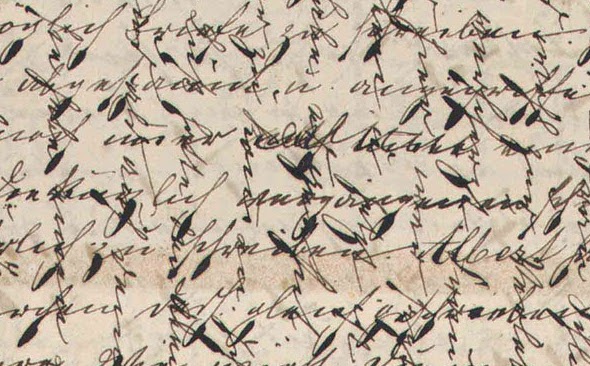 |
| An Example of "Cross-Writing" [Source : Paperblanks.com] |
Should we run out of room on our page, and remembering that we should only write on one side, we could as a somewhat casual but convenient expedient turn the page 90% and "cross-write" sideways. This practice would have been considered as more appropriate for personal mail to a family member or close friend and would normally be kept to a minimum due to the likely loss of legibility. But this did not stop some well-known Novelists in indulging in "cross-writing" whole pages of their letters, even those sent in envelopes. One could however write on the rear of the two side "flaps" of the letter (explained below) but that portion of the letter could be viewed during transit so would not be confidential.
 |
| The format of our letter |
Finally, upon completing and signing our letter we can move onto the final stage of creating our "envelope".
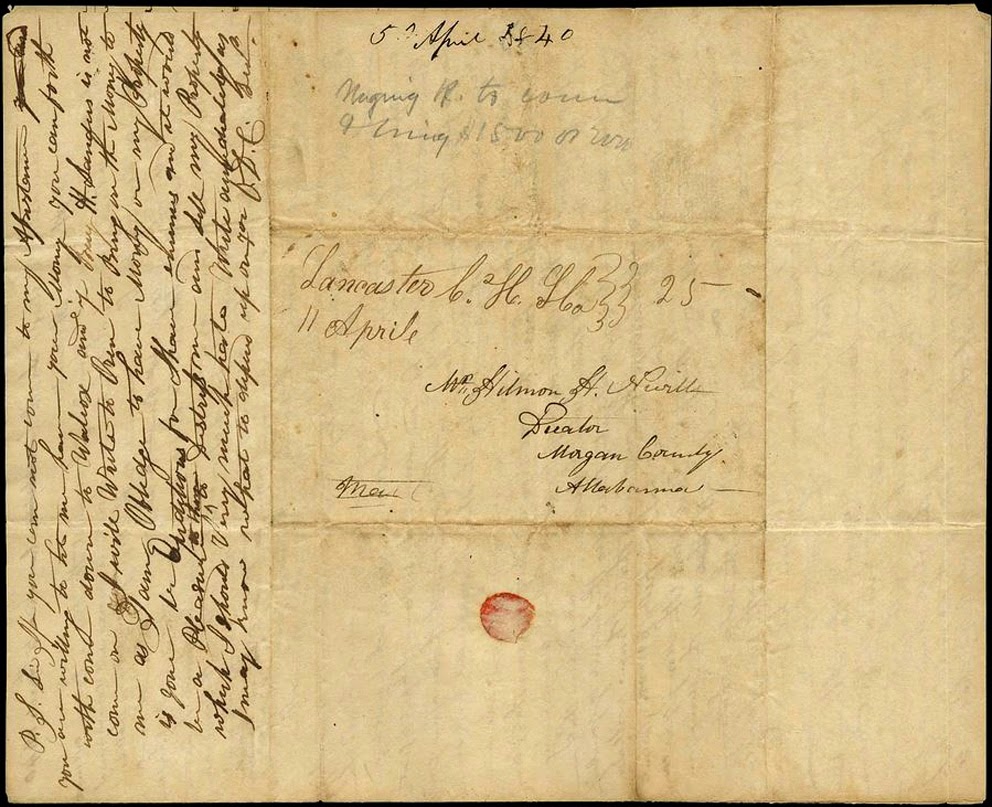 |
| A letter from 1840 showing the position of the four folds. Note that the reverse of one side flap has been written on. [Source : Regency Stamps] |
Now with a ruler and holding the page length-ways with the writing facing toward us, we fold the two sides edges almost vertically inwards so that the two folds just touch each other. Next, holding down the two side folds and again using your ruler, fold the letter horizontally upwards about 76mm from the bottom of the page. Now, again with your ruler, fold the very top of the letter horizontally downwards about 30mm from the top of the page. This now enables us to tuck the top fold into the bottom of the letter to form a self-made envelope measuring around 148mm by 100mm. Finally, ensuring that where the two parts are slipped into each other on the reverse of our "envelope" is at the bottom, write the recipients name and address on the front but leaving room for the postal stamp impression at the top.
 |
| The wax seal on a letter from 1836 [Source : Grosvenor Auctions] |
The last part of the process would be to seal our letter in order firstly that it did not burst open in transit and secondly that it was not fully opened by prying eyes, either in transit or upon delivery. Even now, by pushing apart the top and bottom sides you will see that our writing is fairly well obscured by the original folded side flaps. While hand made envelopes as we know them today were in fact available these were generally only used by the aristocracy and the very well to do. Prior to 1839 the use of an additional envelope meant that the letter was then counted as two sheets of paper rather than one thus an additional postal charge would be levied.
 |
| Gold Wax Seal with Carnelian Intaglio (in middle foreground) with sealing wax and another family owned gold seal at rear [From my own collection] |
We now make use of our wax seal by using a candle or preferably a wax taper (used to light oil lamps) to melt one end of our stick of sealing wax, allowing a sufficient amount to dribble onto the centre of the join on the reverse of our "envelope". We must ensure that we do not heat the red wax so much that it blackens or worse still, catches fire. By my own experience this only comes with practice! Alternatively, granules of the red wax could be melted in a spoon over a candle and placed on the paper. Very quickly before the wax dries we place our wax seal firmly over the soft wax thereby leaving an impression from the seal and ensuring the wax has adhered firmly to the paper. The letter cannot be fully opened without breaking this quite effective seal and signs of any tampering would now be very evident. By keeping the seal at the same side as the bottom of the address on the reverse (front) side this should ensure that the Post Office hand stamp impression will not be placed anywhere near the wax seal, either cracking it or risking an indistinct stamp impression.
The family owned gold seal I have used holds an inset carnelian intaglio bearing the engraved intials,"J.H." in a Flemish style script, being for my Great Great Great Grandfather Mr John Hall, a "portioner" [land-owner] residing in Roslin village, Midlothian in Scotland and who died in 1835. The second gold seal at rear belonged to my Great Grandfather, a Merchant in Edinburgh, who died in 1862. Most individuals of reasonable means owned personalised seals.
 |
| This mid-directed letter from 1835 is proof that mis-sent mail was then a common problem [Source : "British Postal Museum & Archives"] |
Finally we must entrust our sealed letter to the postal system although we could not guarantee a speedy delivery. Letters prior to 1840 were carried by means of a rather archaic postal system which the great Post Office Reforms of 1839 and 1840 sought to address. Up to this date local Post Office Agencies took a fee and stamped the letter with a rubber stamp, each town or post office having their own unique stamp which might be the name of the town, a number, or the date or a combination of all. This or another stamp may also show that the required postage had been paid although, quite oddly, it was much more common for the recipient to pay the postage charge upon delivery of the letter.
 |
| Post Office Postal Charges from the 10th Jan 1840 [Source : Wikipedia] |
An aged family relative wrote in 1883 that a good many old buildings were still standing in the Candlemaker Row in Edinburgh, "...notably the Harrow Inn, where in the times of our Fathers, was the place where all the letters for Roslin [village] were left till they were called for by some one who happened to be going out…"
Such a haphazard payment and delivery system was inefficient and no longer appropriate as the amount of postal mail increased exponentially.
 |
| The famous "Penny Black", introduced in 1840 [Source : Wikipedia] |
Under the reforms proposed by Rowland Hill, and upon the introduction in Great Britain of the famous adhesive "Penny Black" in 1840, postage was now based on weight. Slowly a more ordered postal system evolved, an efficient postal system also aided commerce and the general transaction of business.
Image Copyright : Unless otherwise stated, all images are from my personal collections and may be freely copied provided this site is acknowledged.
Bibliography / Rārangi Pukapuka :
- Personal family archives and artefacts
- Various Internet Resources













